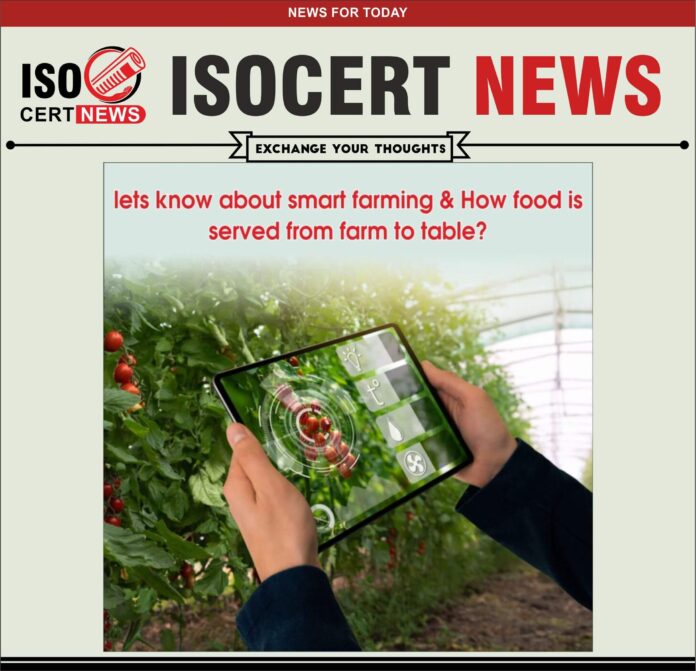Angela Schuster, an expert in reveals how digitalization is transforming agriculture and helping to feed the world.
What Benefits does Smart Farming have over a Conventional Approach?
Smart farming is certainly one of the primary catalysts in producing more food with less for a growing global population. In particular, smart agriculture increases productivity through more efficient use of natural resources and inputs, and better management of land and the environment.
While this is critical to sustainably feed the growing global population, smart agriculture offers further benefits to communities around the world. There are other benefits that smart agriculture brings to communities worldwide.
Traditional supply chains have been characterized by an imbalance of power, with farmers often having less power because they had less information on the performance of their products relative to customer demands. Smart agriculture provides a vital link between all actors in the supply chain by facilitating the efficient and fair flow of information and thereby facilitating better decision-making. It could rebalance power and redistribute profits in a fairer way across the supply chain.
Smart agriculture also supports audit activities, connecting information across the supply chain so that statements of production can be verified. This can include the safety of the food produced (for example, ensuring there are no harmful chemical residues) where it was grown, how animals were treated on the farm, or sustainable practices that help protect the environment (like reducing GHG emissions).
Intelligent agriculture allows farmers to better understand important factors such as water, topography, appearance, vegetation and soil types.
It allows farmers to determine the best use of scarce resources in their production environment and to manage them in an ecologically and economically sustainable manner.
How can Automation Transform Farming? What Effect will that have on Farm Jobs and Rural Economies?
Automating changes the way farmers make decisions on the farm. They know what the opportunities are, what the challenges are, and what the constraints are. They can also become more effective and innovative in their approach, growing more with less. From an economic point of view, automation truly means that farmers can reduce costs, time and waste, resulting in higher profit margins and more efficient use of resources.
Automation also alters the types of work and how work is done on farms. You need different skills to understand and use smart farming technology.
Developing new skills empowers industry participants more broadly and attracts new people who may not have considered an agricultural career. However, smart farming can also reduce the complexity of the skills needed.
Automation can be a challenge for some farmers because adapting to technology can be intimidating. This means that technology providers need to make their technology easy to use and intuitive to achieve adoption at scale.
How can Smart Agriculture Work for the Majority of Farmers in the World, Who are Small Farmers Working with Basic Tools on Small Pieces Of Land?
There is usually a cost associated with access to smart agriculture solutions, but in most cases, the cost depends on the scope and scale of the smart agricultural technology being used. If you look beyond the material like “intelligent agriculture” and also take into account the data, and data sharing, like smart agriculture, there are economic and accessible applications that can be very helpful to smallholders.
Smart phone weather forecasting is not something that people can automatically associate with smart agriculture, but it can have a profound impact on farmers’ decision-making.
This may include weather radars and warnings of high-impact events, for example, flood or storm forecasts that may provide small operators with sufficient time to move herds to heights or to protect and harvest their crops.
What are the Most Visible Uses for Smart Agriculture in Farming? What Changes, If Any, will they see on their Boards?
To be fair, consumers do not necessarily see “see” the application of smart agriculture. What will be most evident to them is the connection between what they buy and where and how it was produced.
Smart farming has an important role to play in checking production and origin claims for consumers. We have seen this more and more consumers make purchasing decisions according to their product preferences, food security, durability, animal welfare, and country of origin.
How can Standards be Supportive of Climate-smart Agriculture? How will the ISO Strategic Advisory Group on Smart Agriculture (to which you contribute) and Its Smart Agriculture Road Map Make this Project A Reality?
Agriculture is under growing pressure to produce food in a more climate-friendly manner and for more people worldwide. This means there is real pressure on agriculture to increase efficiency and produce more with less. Smart agriculture can help farmers get there.
Allow the optimization of the use of resources and efficient food production.
Provide connectivity throughout the supply chain from farm to plate and anything in between.
Assist in the implementation, follow-up and reporting of policy strategies such as the United Nations Sustainable Development Goals.
Ref – https://www.iso.org/news/ref2799.html










